It looks like you're using an Ad Blocker.
Please white-list or disable AboveTopSecret.com in your ad-blocking tool.
Thank you.
Some features of ATS will be disabled while you continue to use an ad-blocker.
share:
There are two questions I wish to ask:
1. How many trusses had to be taken out to create a heavy load on lower trusses to cause a pancake effect?
2.How much of the supporting inner core and the outer core had to be effectively weakened to cause a total collapse?
Let's begin by looking at some pictures/diagrams of the World Trade Center set up.
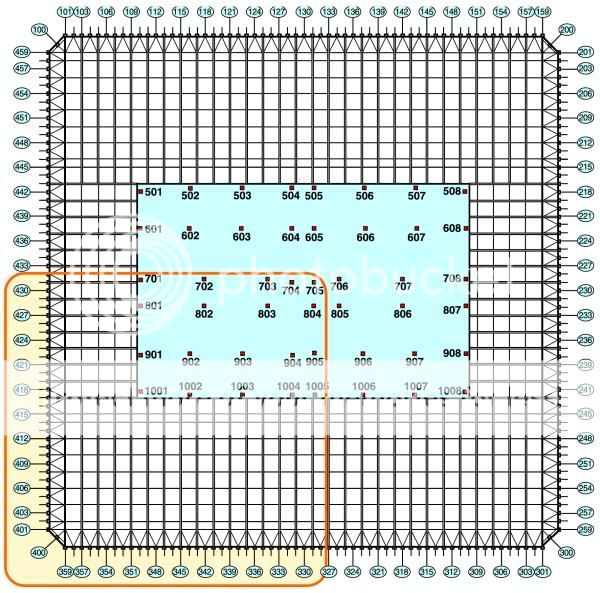
In this picture, we notice the inner core, and the outer core, connected by a series of trusses.
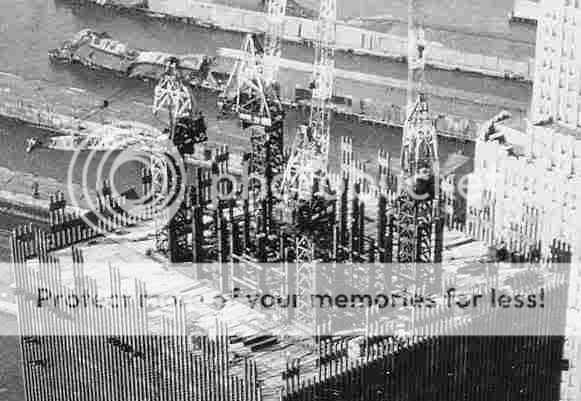 This as well shows that.
This as well shows that.
-----------------------------------------------------------------------
The Impact.. of the Aircraft Impact
First, we must look at what aircraft are composed of, in a general outlook, which is enough for what we need to know. The body itself is encased in an aluminum shell, with a series of supports in its wings to hold up its integrity against stress. The most dense parts of the aircraft, and more survivable, durable are the aircraft's engines themselves.
Boeing 767 diagram:
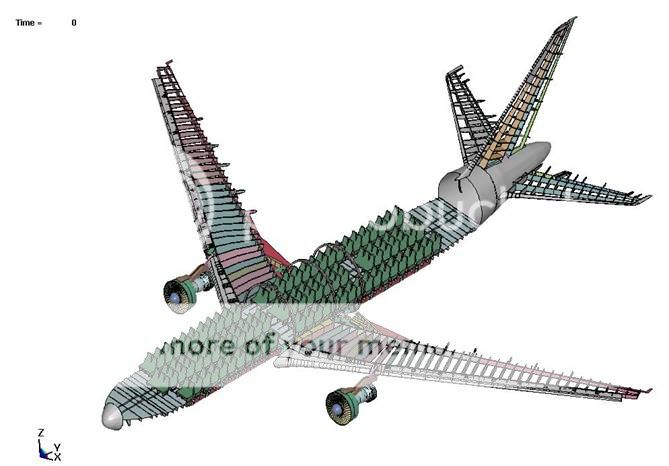
To put it briefly, yes, at high speeds the aluminum, however weak it indeed is in strength, can still inflict damage crippling damage. And even more so with the case of the aircraft's engines.
When the planes impacted the World Trade Center, they, as shown in the following pictures, clipped the outside supports, taking them out, taking out some of the truss sytems, and resting into the inner core.

These following images are by a company Applied Research Associates, funded by the NIST. This is what they believe could of been the possible damage inflicted by the aircraft.
WTC 1 Damage:
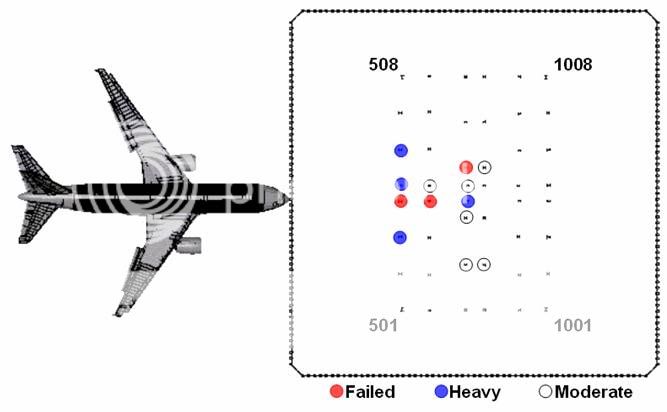
WTC 2 Damage:
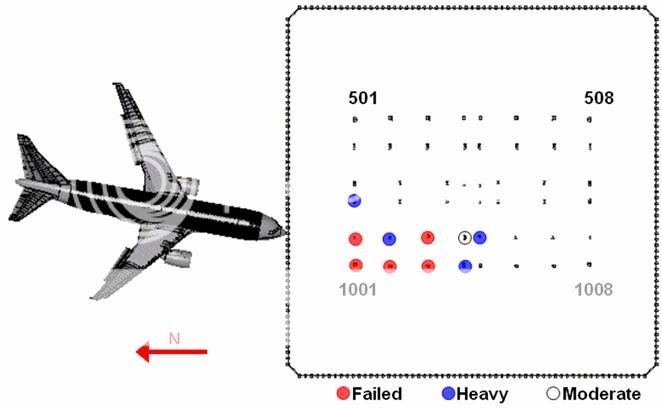
A quick diagram of what they believe as "Failed, Moderate damage":
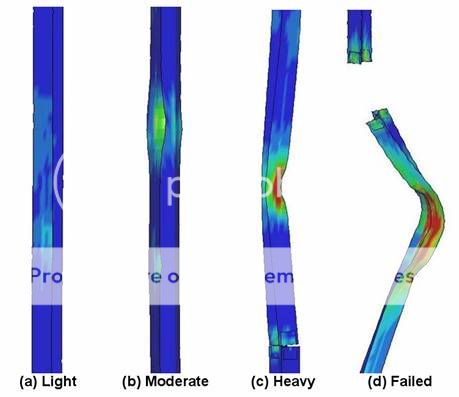
The chances of the aircraft themselves having that large of an impact and even causing some of the steel structural supports to just "break" or "fail" as they did is very unlikely. From the outer frame of the aircraft itself after passing through the outer core, and being restricted by the constriction of floor trusses, damage to the innercore minimum, and damage is sustain of course by the outercore and trusses.
The engines however, have a greater potential for destruction, enough to cause some damage to the core.
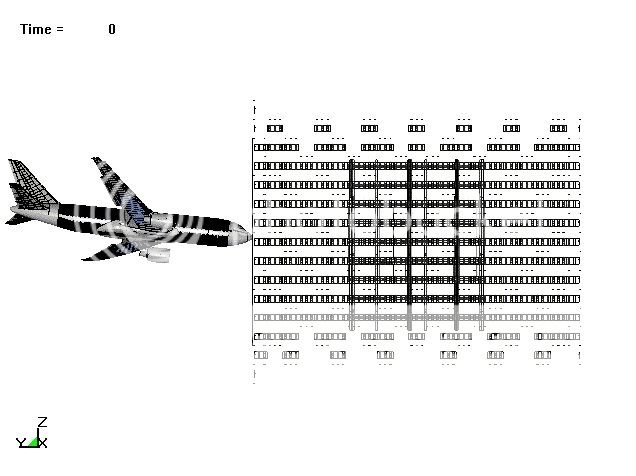
--------------------------------------------------
The Fire Issue
Beginning with this, let's first note why the buildings initially collapsed according to the NIST. Ahem. And I quote:
This which they base solely it seems on their simulations, so it can be as trivial as the next investigation.
1. How many trusses had to be taken out to create a heavy load on lower trusses to cause a pancake effect?
2.How much of the supporting inner core and the outer core had to be effectively weakened to cause a total collapse?
Let's begin by looking at some pictures/diagrams of the World Trade Center set up.

In this picture, we notice the inner core, and the outer core, connected by a series of trusses.

-----------------------------------------------------------------------
The Impact.. of the Aircraft Impact
First, we must look at what aircraft are composed of, in a general outlook, which is enough for what we need to know. The body itself is encased in an aluminum shell, with a series of supports in its wings to hold up its integrity against stress. The most dense parts of the aircraft, and more survivable, durable are the aircraft's engines themselves.
Boeing 767 diagram:

To put it briefly, yes, at high speeds the aluminum, however weak it indeed is in strength, can still inflict damage crippling damage. And even more so with the case of the aircraft's engines.
When the planes impacted the World Trade Center, they, as shown in the following pictures, clipped the outside supports, taking them out, taking out some of the truss sytems, and resting into the inner core.

These following images are by a company Applied Research Associates, funded by the NIST. This is what they believe could of been the possible damage inflicted by the aircraft.
WTC 1 Damage:

WTC 2 Damage:

A quick diagram of what they believe as "Failed, Moderate damage":

The chances of the aircraft themselves having that large of an impact and even causing some of the steel structural supports to just "break" or "fail" as they did is very unlikely. From the outer frame of the aircraft itself after passing through the outer core, and being restricted by the constriction of floor trusses, damage to the innercore minimum, and damage is sustain of course by the outercore and trusses.
The engines however, have a greater potential for destruction, enough to cause some damage to the core.

--------------------------------------------------
The Fire Issue
Beginning with this, let's first note why the buildings initially collapsed according to the NIST. Ahem. And I quote:
The two aircraft hit the towers at high speed and did considerable
damage to principal structural components (core columns, floors, and
perimeter columns) that were directly impacted by the aircraft or
associated debris. However, the towers withstood the impacts and would
have remained standing were it not for the dislodged insulation
(fireproofing) and the subsequent multi-floor fires. The robustness of
the perimeter frame-tube system and the large size of the buildings
helped the towers withstand the impact. The structural system
redistributed loads from places of aircraft impact, avoiding larger
scale damage upon impact. The hat truss, a feature atop each tower
which was intended to support a television antenna, prevented earlier
collapse of the building core. In each tower, a different combination
of impact damage and heat-weakened structural components contributed to
the abrupt structural collapse.
This which they base solely it seems on their simulations, so it can be as trivial as the next investigation.
In WTC 1, the fires weakened the core columns and caused the floors on the south side of the building to sag. The floors pulled the heated south perimeter columns inward, reducing their capacity to support the building above. Their neighboring columns quickly became overloaded as columns on the south wall buckled. The top section of the building tilted to the south and began its descent. The time from aircraft impact to collapse initiation was largely determined by how long it took for the fires to weaken the building core and to reach the south side of the building and weaken the perimeter columns and floors.
In WTC 2, the core was damaged severely at the southeast corner and was restrained by the east and south walls via the hat truss and the floors. The steady burning fires on the east side of the building caused the floors there to sag. The floors pulled the heated east perimeter columns inward, reducing their capacity to support the building above. Their neighboring columns quickly became overloaded as columns on the east wall buckled. The top section of the building tilted to the east and to the south and began its descent. The time from aircraft impact to collapse initiation was largely determined by the time for the fires to weaken the perimeter columns and floor assemblies on the east and the south sides of the building. WTC 2 collapsed more quickly than WTC 1 because there was more aircraft damage to the building core, including one of the heavily loaded corner columns, and there were early and persistent fires on the east side of the building, where the aircraft had extensively dislodged insulation from the structural steel.
The WTC towers likely would not have collapsed under the combined effects of aircraft impact damage and the extensive, multi-floor fires that were encountered on September 11, 2001 if the thermal insulation had not been widely dislodged or had been only minimally dislodged by aircraft impact.
So there you have it, NIST's basic summary explanation for why they believe the buildings indeed collapsed.
Now let's start taking the look at the truss system, the inner core and the outer core.
As shown in the pictures above, the inner core is connected to the outercore mainly to keep its tube frame together and to prevent its topling over.
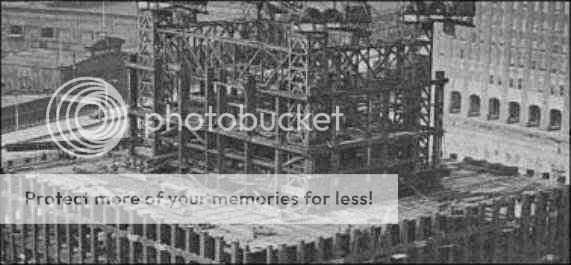
The whole system in itself is pretty well supported or else the skyscraper wouldn't of lasted as long as it did through mother nature and other Earth forces.
When the aircraft hit the buildings, they pierced passed the outer core into the center core, expelling a large explosion of jet fuel which carried its way around the surrounding floors, that explosion was brief.
Moments after you have a gaping hole in the World Trade Center structure with some trusses, outer core and inner core sustaining damage. Along with that, you have jet fuel blasted everywhere, in the process of burning up, a process that only lasted up to 10-13 minutes max.
So now you have a hydrocarbon enriched fire spreading throughout the surrounding buildings burning hot, not hot enough to melt structural steel which melts at 1500 Degrees Celsius. Aside from that the flames from the jet fueled fire reached temperatures near 1000 Degrees Celsius, enough to begin to compromise its structural integrity (strength) and cause it to weaken. But remember, even then it takes time for the steel to absorb the heat and then began to weaken, in the brief time span that was allowed at the time, during the initial explosion and the jet fuel being spent.
As the fire begins to cool down due to lack of jet fuel, you notice the black smoke pouring out from the building, which in its entirety represents a cooling flame. So thus, the temperature of the fires within the World Trade Center wasn't becoming much a problem. I mean heck, you had people standing near the impact spots where the fires initially began!. Nevertheless, the temperature still could pose a threat.
Also take note that on that day, the wind didn't play any vital part. Why?
Wind ==> Provides a flow of oxygen ==> Fuel for the fire. The fire in the World Trade Center was oxygen STARVED, thus resulting in an even lower temperature than would be predicted.
So now you have an oxygen starved flame, spreading throughout the floors of the World Trade Center, feeding off office and basic building supplies found on each floor (Carpets, desks etc).
Now consider.. NOT EVERYWHERE on the impact floors was the fire concentrated as in others, there was NO uniform provisio of heat, that much is obvious. Which translates into not all areas of the building were being equally affected.
Again --> Oxygen Starved Flame being fueled off by office desk supplies is now making its way through "the trusses" and "center core" to cause "weakening". EVENTUALLY, this becomes too much, given the amount of time it took each building to collapse, and the buildings supports just gave out. Trusses couldn't hold their load, supports buckled and down went the mass.. powered by gravity.
----------------------------------------------
Problem here?
Why.. yes sir there is!
Now remember, the building is a tube. You have your INNER CORE (Structural support
beams), your outer core, comprised of small beams, and your trusses that hold the two together.
Also remember, you have a fire, that is oxygen starved for the majority of the time the building existed after impact, "weakening" these key components. How is that possible? How does an oxygen starved office supplies fueled fire bring down an office building? Faulty fireproofing, give me a break.
As seen in videos surrounding the collapse of the World Trade Centers:
Video 1
Video 2
Video 3
Notice the "shaking" before the building fell, and also how the antenna on top began to fall before the rest of the building --> Was the core taken out first? But if so.. that doesn't make any sense, because the fires couldn't reach the inner core completely enough to cause heat to even weaken the them sufficiently to cause IT to fall before the rest of the building.
Infact, the TRUSSES should of gave out first around the building, with the outter supports giving out but keeping the inner core in tact.
WTC 2 turns into dust, I can't even explain that.
=============================================
Back to what I want to get at.
An oxygen starved fire, which feeds off office supplies and building materials is spreading throughout the floors.
Here's where I initiate my argument.
I can understand the trusses weakening due to some heat extremes near the initial impact point. With that, they can't support the load that is atop of them, or rather.. any additional load. Also, NOT ALL the trusses were weakened uniformly. You can't therefore expect all the trusses to give out on a single floor due to one area weakening and falling down, because in fact, you still have surrounding trusses, holding the outer frame in with the inner frame, so in essence, the building would still be in tact regardless if the trusses failed.
Even though one area might be sufficiently more weakened than the other, how many trusses were being exposed to the high temperatures required to weaken them at the same time, resulting in them all giving out, causing this "pancake theory" and not to mention, while you had lower trusses near the impact zone weakened, you still had upper trusses, above the impact zone still in tact, holding the building together.
How much force DID the failing trusses provide onto the trusses below to cause such a pancake theory to work --> I'm open minded but I'm not holding that they all gave out simultaneously like we should believe. I can agree with the trusses being weakened, but not all on one floor substaintially.
The other thing though, even though you had trusses in on area of the building gave out, you still had the upper trusses above the impact zone supporting the building together and the ones below it, you're telling me that trusses giving out at those specific areas was enough to cause a force to bring down the WHOLE building.
Also, furthermore on this argument, even though you had a possible "pancaking of floor, it supposeably had enough force to miraculously bring down the core?
Remember, an oxygen starved fire fueled by office supplies took a little under two hours to cause a structure like this:
 to fall to its knees.
to fall to its knees.
That's all.
(P.S... Don't forget when fires burn, they displace mass for energy, so don't say the floors that had weakened trusses had a substaintial amount of mass.)
References:
www.mediumrecords.com...
www.arasvo.com...
www.physics.byu.edu...
wtc.nist.gov...
[edit on 6/5/2006 by Masisoar]
[edit on 6/5/2006 by Masisoar]
[edit on 6/5/2006 by Masisoar]
Problem here?
Why.. yes sir there is!
Now remember, the building is a tube. You have your INNER CORE (Structural support
beams), your outer core, comprised of small beams, and your trusses that hold the two together.
Also remember, you have a fire, that is oxygen starved for the majority of the time the building existed after impact, "weakening" these key components. How is that possible? How does an oxygen starved office supplies fueled fire bring down an office building? Faulty fireproofing, give me a break.
As seen in videos surrounding the collapse of the World Trade Centers:
Video 1
Video 2
Video 3
Notice the "shaking" before the building fell, and also how the antenna on top began to fall before the rest of the building --> Was the core taken out first? But if so.. that doesn't make any sense, because the fires couldn't reach the inner core completely enough to cause heat to even weaken the them sufficiently to cause IT to fall before the rest of the building.
Infact, the TRUSSES should of gave out first around the building, with the outter supports giving out but keeping the inner core in tact.
WTC 2 turns into dust, I can't even explain that.
=============================================
Back to what I want to get at.
An oxygen starved fire, which feeds off office supplies and building materials is spreading throughout the floors.
Here's where I initiate my argument.
I can understand the trusses weakening due to some heat extremes near the initial impact point. With that, they can't support the load that is atop of them, or rather.. any additional load. Also, NOT ALL the trusses were weakened uniformly. You can't therefore expect all the trusses to give out on a single floor due to one area weakening and falling down, because in fact, you still have surrounding trusses, holding the outer frame in with the inner frame, so in essence, the building would still be in tact regardless if the trusses failed.
Even though one area might be sufficiently more weakened than the other, how many trusses were being exposed to the high temperatures required to weaken them at the same time, resulting in them all giving out, causing this "pancake theory" and not to mention, while you had lower trusses near the impact zone weakened, you still had upper trusses, above the impact zone still in tact, holding the building together.
How much force DID the failing trusses provide onto the trusses below to cause such a pancake theory to work --> I'm open minded but I'm not holding that they all gave out simultaneously like we should believe. I can agree with the trusses being weakened, but not all on one floor substaintially.
The other thing though, even though you had trusses in on area of the building gave out, you still had the upper trusses above the impact zone supporting the building together and the ones below it, you're telling me that trusses giving out at those specific areas was enough to cause a force to bring down the WHOLE building.
Also, furthermore on this argument, even though you had a possible "pancaking of floor, it supposeably had enough force to miraculously bring down the core?
Remember, an oxygen starved fire fueled by office supplies took a little under two hours to cause a structure like this:

That's all.
(P.S... Don't forget when fires burn, they displace mass for energy, so don't say the floors that had weakened trusses had a substaintial amount of mass.)
References:
www.mediumrecords.com...
www.arasvo.com...
www.physics.byu.edu...
wtc.nist.gov...
[edit on 6/5/2006 by Masisoar]
[edit on 6/5/2006 by Masisoar]
[edit on 6/5/2006 by Masisoar]
The truss failure theory fell apart long ago, yet no one noticed.
911research.wtc7.net...
The fact is, the fires were not large enough, did not burn long enough, or hot enough, to max out the heat sink ability of 250,000 tons of steel.
The collapse of the towers was too quick, and relatively, too neat for an accidental collapse caused by structural failure. AQnyway you look at it, the demolition theory screams at you when watching the videos.
When 9/11 took place, and I saw the towers collapse, I said, those terrorist bastards, to add insult to injury, blew them up. This was on the day of the attacks. Mind you, even before they mentioned the "culprits" I thought it was going to be middle eastern religous nutjobs. I figured in a few weeks, after the investigations of the wreckage, they would find bomb proof and such. When the media was saying that engineers were claiming it was just structural failure from the plane crashes, I thought, what idiots, they havent looked at the wreckage, they are speculating before examining it. Sooner or later, they will discover that bombs were used. Mind you, this was during the month after the attacks when I still believed it was purely an attack of some crazy jihadists.
About a month or two afterward, when I really started puzzling over the discrepencies that kept popping up in the media, and some of the bizzare facts not widely publicized, and began to wonder about the official story, the WTC collapse certainly was popping up alot.
I could not find anyone then, and I cant really find too many now, who, when they watched those towers collapse, thought it was anything other than a demolition.
While I am no expert, I have seen a few controlled demolitions in my life. When some local building was gonna get pulled down, I usually showed up with other onlookers to watch.
The collapse of the WTC twin towers reminded me, alot of the demolition of the Kingdome in downtown Seattle. The crumbling and pulverizing of concrete and asbestos into clouds of dust that ended up pouring like a sooty tsunami through all of downtown Seattle, as well as districts like Capitol Hill, Queen Anne Hill, Beacon Hill, Fremont, Ravenna, and the U District. The neat colapse of the structure on top of itself. The speed at which it collapsed.
When I began to ponder it more, I realized that perhaps there was more than a passing resemblance in the collapse of the Kingdome and the WTC.
The more research I do on the sunbject, the more I have come to regard the offical story the same way I regard the story of the Tooth Fairy: a nice little tale to ease the fears of the blissfully ignorant and help them deal with the loss. But about as truthful.
911research.wtc7.net...
The fact is, the fires were not large enough, did not burn long enough, or hot enough, to max out the heat sink ability of 250,000 tons of steel.
The collapse of the towers was too quick, and relatively, too neat for an accidental collapse caused by structural failure. AQnyway you look at it, the demolition theory screams at you when watching the videos.
When 9/11 took place, and I saw the towers collapse, I said, those terrorist bastards, to add insult to injury, blew them up. This was on the day of the attacks. Mind you, even before they mentioned the "culprits" I thought it was going to be middle eastern religous nutjobs. I figured in a few weeks, after the investigations of the wreckage, they would find bomb proof and such. When the media was saying that engineers were claiming it was just structural failure from the plane crashes, I thought, what idiots, they havent looked at the wreckage, they are speculating before examining it. Sooner or later, they will discover that bombs were used. Mind you, this was during the month after the attacks when I still believed it was purely an attack of some crazy jihadists.
About a month or two afterward, when I really started puzzling over the discrepencies that kept popping up in the media, and some of the bizzare facts not widely publicized, and began to wonder about the official story, the WTC collapse certainly was popping up alot.
I could not find anyone then, and I cant really find too many now, who, when they watched those towers collapse, thought it was anything other than a demolition.
While I am no expert, I have seen a few controlled demolitions in my life. When some local building was gonna get pulled down, I usually showed up with other onlookers to watch.
The collapse of the WTC twin towers reminded me, alot of the demolition of the Kingdome in downtown Seattle. The crumbling and pulverizing of concrete and asbestos into clouds of dust that ended up pouring like a sooty tsunami through all of downtown Seattle, as well as districts like Capitol Hill, Queen Anne Hill, Beacon Hill, Fremont, Ravenna, and the U District. The neat colapse of the structure on top of itself. The speed at which it collapsed.
When I began to ponder it more, I realized that perhaps there was more than a passing resemblance in the collapse of the Kingdome and the WTC.
The more research I do on the sunbject, the more I have come to regard the offical story the same way I regard the story of the Tooth Fairy: a nice little tale to ease the fears of the blissfully ignorant and help them deal with the loss. But about as truthful.
Originally posted by Skadi_the_Evil_Elf
The more research I do on the subject, the more I have come to regard the offical story the same way I regard the story of the Tooth Fairy: a nice little tale to ease the fears of the blissfully ignorant and help them deal with the loss. But about as truthful.
That's how it's fallen upon me. It's people like HowardRoark that inspire me to do more research! Thanks Howard
Originally posted by Masisoar
That's how it's fallen upon me. It's people like HowardRoark that inspire me to do more research! Thanks Howard
Ive found somewhat a similar motive, though folks like Howard aren't the inspiration for it.
Its the media's crusade to keep hammering the offical story home, and they way it scoffs, disrespects, and gives little serious airtime to the many well credentialed researchers who think the offical story makes as much sense as 2+3=11.
Quality post Masisoar!
One vote for you.
Now where are all the coincidence guys?
I have noticed lately the FLEE from fact and science.
One vote for you.
Now where are all the coincidence guys?
I have noticed lately the FLEE from fact and science.
It's people like HowardRoark that inspire me to do more research! Thanks Howard
Even though I disagree with Howard he DOES do his research. ALOT more than most of you on the forum.
I find myself defending him quite alot even though I disagree with him.
Why? Because I look at the facts no matter what direction they are pointing. I really have to congratulate Howard. But to be honest, I think alot of the time we are going around in circles and I think we should be doing something about this whole fraud instead of just debating it.
I was beginning to think about the possibility of the near future, if things get too hot in and heavy with people challenging the official story more
openly and it becoming a nuisance for the government, or those who might of planned the attacks that if a lot people say that they proved was
inconclusive, for whatever reason and that explosives or charges could of been used to aid the building in bringing it down (Nailing the core),
then I fear that, they may use the scapegoat that terrorists must of planted an internal device helping them bring down the towers.
But however, from that explanation, you'd be getting more questions:
Why didn't they just use the device to take down the building in the first place?
How would someone go by and be able to successfully plant the charges? (A question those who question the official story are currently trying to find out)
Who else may be behind the attack aiding the charges or explosives?
Interesting thought.
But however, from that explanation, you'd be getting more questions:
Why didn't they just use the device to take down the building in the first place?
How would someone go by and be able to successfully plant the charges? (A question those who question the official story are currently trying to find out)
Who else may be behind the attack aiding the charges or explosives?
Interesting thought.
Another question:
If the powers that be finally come out and say, yeah, the twin towers were demolished by terrorists, that will open up a nice can of worms.
The biggest question on everyone's mind would be:
"Why did you spend the past 4 years BSing us and telling us it was a structural failure and collapse, instead of telling us from the start that terrorists planted the bombs as a grand finally?"
Id like to see them worm their way out of that.
Which is why I think they will never admit the towers were demolished on purpose, until the are forced.
If the powers that be finally come out and say, yeah, the twin towers were demolished by terrorists, that will open up a nice can of worms.
The biggest question on everyone's mind would be:
"Why did you spend the past 4 years BSing us and telling us it was a structural failure and collapse, instead of telling us from the start that terrorists planted the bombs as a grand finally?"
Id like to see them worm their way out of that.
Which is why I think they will never admit the towers were demolished on purpose, until the are forced.
playing devils ad a little:
to admit that the towers had explosives planted in them would make the govt look worse.
we all know the can of worms that was opened in regards to airline sec. after the attacks.
every skyscraper in the nation would become issue, and it would become a nuisance for those in the govt.
to admit that the towers had explosives planted in them would make the govt look worse.
we all know the can of worms that was opened in regards to airline sec. after the attacks.
every skyscraper in the nation would become issue, and it would become a nuisance for those in the govt.
Since this involves key members of important businesses that obviously benefitted greatly from this, maybe it's one of our true laid out shots at
getting at the head of big business. All you would have to do is link one person to another to another and then you have a web of scandals, and along
with that, you'll definately have more whistle blowers once they see it as safe.
But that's just wishful thinkin!
But that's just wishful thinkin!
Originally posted by Skadi_the_Evil_Elf
The fact is, the fires were not large enough, did not burn long enough, or hot enough, to max out the heat sink ability of 250,000 tons of steel.
The collapse of the towers was too quick, and relatively, too neat for an accidental collapse caused by structural failure. AQnyway you look at it, the demolition theory screams at you when watching the videos.
First the entire 250,000 tons didn't have to be heated evenly.
Second, How much damage was done to the central core? Nobody really knows. With the outer shell severely damaged the load would have to have been transferred to the central core somehow.
Third the viscoelastic dampeners would have reduced the amount of heat transfer. Isolating the trusses from the larger steel members
Last the whole building didn't have to fail, just one floor had to. The upper part of the tower would then act as a pile driver on the rest of the tower below. This would account for the destruction of the central core.
[edit on 6-6-2006 by JIMC5499]
Another piece I'd like to go forward with in response to the clean up.
I'm still peeved that the debris from the World Trade Center disaster, from buildings 1, 2 and 7 weren't properly studied and investigated. It was impression that only a small majority of the debris was even scoured for evidence of what could of happened.
If they took the time to piece each building back together in parts, or just take a look at each individual piece of steel, I would be more satisfied with their explaination right now than what they've provided, but because they didn't investigate it thoroughly enough, it leaves so many people with just that one more addition of doubt.
Follow up article by Bill Manning
Post Clean Up Pictures
I'm still peeved that the debris from the World Trade Center disaster, from buildings 1, 2 and 7 weren't properly studied and investigated. It was impression that only a small majority of the debris was even scoured for evidence of what could of happened.
If they took the time to piece each building back together in parts, or just take a look at each individual piece of steel, I would be more satisfied with their explaination right now than what they've provided, but because they didn't investigate it thoroughly enough, it leaves so many people with just that one more addition of doubt.
Follow up article by Bill Manning
Post Clean Up Pictures
Originally posted by Masisoar
1. How many trusses had to be taken out to create a heavy load on lower trusses to cause a pancake effect?
The issue is not how much of a load that the failing floors put on the lower floors, but rather the effect that the loss of horizontal bracing from the failed trusses had on the exterior columns.
All columns have an intrinsic value at which they will fail due to buckling. This value is related to the modulus of elasticity of the material the column is made of, the geometric cross sectional shape of the column (round columns are the most stable), and the effective length of the column.
Way back in 1757, Leonard Euler discovered the relationship between these values as given in the following formula.

Where P-crit is the critical buckling load for the column, E=the Modulus of elasticity, I=a factor derived from the cross section of the column, and L=the effective length of the column.
Let’s take a simplified look at the application of this formula. For one exterior WTC tower column, if the length L is defined as the distance between two floor trusses, and if E and I remain the same, what will happen to P-crit if a floor truss pinning the column in place fails?
The failure of a single floor truss will mean that that truss is no longer pinning the column in place at that location, thus the effective length of the column has just been doubled to 2L.
If you look at the formula above, you will not that it is an inverse square law. So, if all we do is double the length L, then the value of P-crit will be reduced to 1/”the square of 2,” or 1/4 of the original value.
If two adjacent floor trusses fail, then we will have tripled the original length of the column. Thus, the value of P-crit will be reduced to 1/”the square of 3,” or 1/9 of the original value.
If three adjacent floor trusses fail, then we will be at 4 times the original length of the column. Thus, the value of P-crit will be reduced to 1/”the square of 4,” or 1/16 of the original value.
Note, that this isn’t even considering the effect of the floor truss sagging as opposed to detaching completely. A sagging truss will not only not be pinning the exterior column in place, but it will also be exerting an inward pull on that column.
The column would only have to buckle inward about 11 inches before it became self propagating.
Originally posted by Masisoar
2.How much of the supporting inner core and the outer core had to be effectively weakened to cause a total collapse?
What are you calling the inner core and outer core? Do you mean the core and the exterior?
Keep in mind that the building design was very efficient at redistributing loads. Furthermore, the loads were redistributed between the exterior and the core through the hat truss at the top of the building. That being said, the loads weren’t evenly redistributed. As columns buckled and failed, the majority of the loads were transferred to the nearest adjacent columns until those began to buckle and fail also. At some point, the ratio of failed to undamaged columns became too great, and the remaining columns failed also.
What that specific point was, I don’t know. It’s like trying to decide the exact point when an avalanche changes from being the movement of a few pebbles to whole side of the mountain.
Bout time you showed up, Howard. Was wondering what took you so long.
But you still cannot explain in a reasonable manner the absolute speed of the collapse by the official story.
911research.wtc7.net...
You also assume that the only thing holding the floors up were the trusses.
But you still cannot explain in a reasonable manner the absolute speed of the collapse by the official story.
911research.wtc7.net...
You also assume that the only thing holding the floors up were the trusses.
The collapse speed of which building?
And what are you going to define as the initiation and termination of each collapse?
From the first sign of strucutral failure to the moment when every part of the buiding has hit the ground?
And what are you going to define as the initiation and termination of each collapse?
From the first sign of strucutral failure to the moment when every part of the buiding has hit the ground?
Note, that this isn’t even considering the effect of the floor truss sagging as opposed to detaching completely. A sagging truss will not only not be pinning the exterior column in place, but it will also be exerting an inward pull on that column.
The column would only have to buckle inward about 11 inches before it became self propagating.
So if a truss was to be "weakened' by the fire, it would begin to sag down upon itself, and because it's still attached to the exterior column, it begins to bring that in as well.
My next question for you Howard: What was the exact cause of a truss to sad down, and not by just the heat.
Keep in mind that the building design was very efficient at redistributing loads. Furthermore, the loads were redistributed between the exterior and the core through the hat truss at the top of the building. That being said, the loads weren’t evenly redistributed. As columns buckled and failed, the majority of the loads were transferred to the nearest adjacent columns until those began to buckle and fail also. At some point, the ratio of failed to undamaged columns became too great, and the remaining columns failed also.
What that specific point was, I don’t know. It’s like trying to decide the exact point when an avalanche changes from being the movement of a few pebbles to whole side of the mountain.
One more further thing, in the Nothern Tower, if you say the trusses gave out, causing too much of a load on the exterior columns, causing them to buckle, and in essence, this creates the domino theory in which the whole building begins to collapse, then why did the Antenna initiate it's descent before the rest of the building began to collapse. More effectively, the core should of been one of the last things to fall, if it took the failing trusses and buckling exterior columns to plunge first.
Also, the south tower began to fall over, no? The system in itself of just the trusses, exterior columns and core should of held together for just a short while and fell on its side, all while the same time taking out the floors below it, but in that particular case, how does it taken down the WHOLE tower when it has an ANGULAR momentum not parallel with length of the skyscraper. In essence, the floors below the impact zone would of sustained damage from the building coming down as it fell over, but wouldn't of taken down the building completely, not to mention in its foot steps.
Also, furthermore, explain the plumes of molten steel at the site of the World Trade Center after it collapsed --> What could of fueled the fire to even become hot enough to even do that! We're talking a molten metal under the debris. Not only is THAT a VERY oxygen starved area, but what could of produced a flame so hot enough and pure to directly burn the steel like that..? Something had to cause the molten steel? Not to mention the steel that was seen coming out of the building as it was burning as many others have commented on.
Edit: Will make a new post with the edit instead.
[edit on 6/6/2006 by Masisoar]
Originally posted by Masisoar
So if a truss was to be "weakened' by the fire, it would begin to sag down upon itself, and because it's still attached to the exterior column, it begins to bring that in as well.
My next question for you Howard: What was the exact cause of a truss to sad down, and not by just the heat.
There was considerable impact damage to the floors and trusses as well.
In addition, the weakest point in the whole structure was probably the truss seats where they were attached to the outer and inner columns. There is photographic evidence that some of the floors in the impact and fire zone pulled off the seats entirely.
One more further thing, in the Nothern Tower, if you say the trusses gave out, causing too much of a load on the exterior columns, causing them to buckle, and in essence, this creates the domino theory in which the whole building begins to collapse, then why did the Antenna initiate it's descent before the rest of the building began to collapse. More effectively, the core should of been one of the last things to fall, if it took the failing trusses and buckling exterior columns to plunge first.
I do not believe that that is true. The NIST report looked at all of the different angles of the WTC 1 collapse and determined that the south wall buckled at the start of the collapse. This caused the antenna to appear to sink into the building when viewed from the north. This affect is not apparent in the views of the collapse from the east and west.
Also, the south tower began to fall over, no? The system in itself of just the trusses, exterior columns and core should of held together for just a short while and fell on its side, all while the same time taking out the floors below it, but in that particular case, how does it taken down the WHOLE tower when it has an ANGULAR momentum not parallel with length of the skyscraper. In essence, the floors below the impact zone would of sustained damage from the building coming down as it fell over, but wouldn't of taken down the building completely, not to mention in its foot steps.
The pivot point dropped out as the collapse progressed. The angular momentum didn’t “stop” it was just obscured by the downward motion of the top as a whole.
Also, furthermore, explain the plumes of molten steel at the site of the World Trade Center after it collapsed --> What could of fueled the fire to even become hot enough to even do that! We're talking a molten metal under the debris. Not only is THAT a VERY oxygen starved area, but what could of produced a flame so hot enough and pure to directly burn the steel like that..? Something had to cause the molten steel? Not to mention the steel that was seen coming out of the building as it was burning as many others have commented on.
There is no credible data on molten steel. Some molten aluminum (from the airplane) was seen to pour out of the building shortly before the collapses.
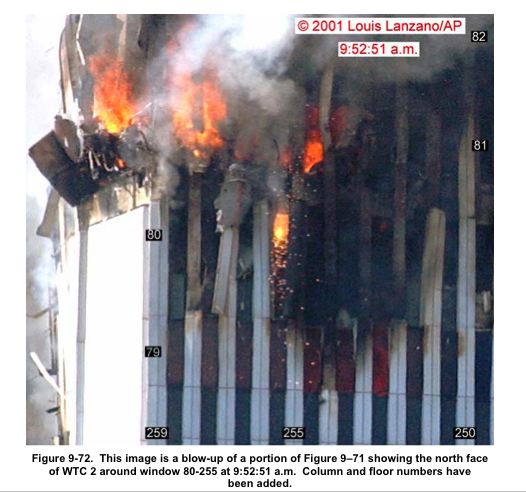
The burning debris in the pile would have remained hot for a long time as there was plenty of fuel and oxygen, and the pile was well insulated. Have you ever heard of underground coal fires? They get super hot and burn for years without huge amounts of oxygen available.
Edit: Adjacent trusses? You mean trusses that are one floor above each other, right?
Yes.

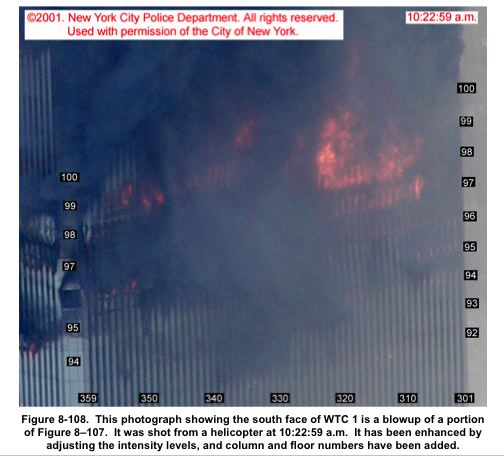
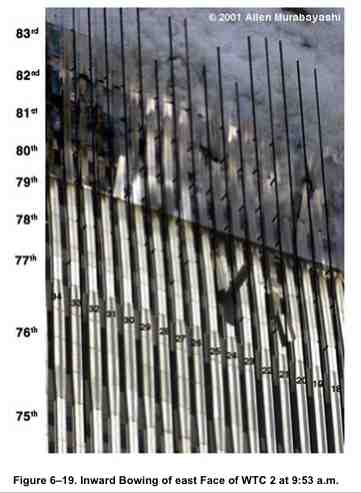
new topics
-
Happy Birthday OZZY
Music: 2 hours ago -
Chinese national busted in LA sending weapons to NK
World War Three: 2 hours ago -
South Korea declares martial law for first time in 50 years over North Korea threat
Other Current Events: 5 hours ago -
Alien warfare predicted for December 3 2024
Aliens and UFOs: 8 hours ago
top topics
-
Alien warfare predicted for December 3 2024
Aliens and UFOs: 8 hours ago, 13 flags -
South Korea declares martial law for first time in 50 years over North Korea threat
Other Current Events: 5 hours ago, 8 flags -
Chinese national busted in LA sending weapons to NK
World War Three: 2 hours ago, 3 flags -
Happy Birthday OZZY
Music: 2 hours ago, 3 flags
active topics
-
Alien warfare predicted for December 3 2024
Aliens and UFOs • 40 • : Oldcarpy2 -
Biden pardons his son Hunter despite previous pledges not to
Mainstream News • 135 • : WeMustCare -
Could Biden pardon every illegal alien
Social Issues and Civil Unrest • 25 • : marg6043 -
Never say Never?
Science & Technology • 59 • : Oldcarpy2 -
Salvatore Pais confirms science in MH370 videos are real during live stream
General Conspiracies • 42 • : Flyingclaydisk -
Australia passes social media ban for children under 16
Social Issues and Civil Unrest • 30 • : twistedpuppy -
Chinese national busted in LA sending weapons to NK
World War Three • 12 • : Flyingclaydisk -
-@TH3WH17ERABB17- -Q- ---TIME TO SHOW THE WORLD--- -Part- --44--
Dissecting Disinformation • 3474 • : Thoughtful3 -
South Korea declares martial law for first time in 50 years over North Korea threat
Other Current Events • 30 • : Oldcarpy2 -
Happy Birthday OZZY
Music • 2 • : network dude
